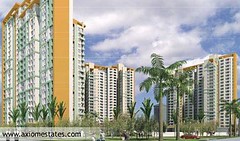What a South Mumbai is to Mumbai or a South Delhi is to Delhi could well be South Indian cities to India! The question is – will the southern region become the downtown of India?
Southern India has for long been the silent crusader, building and strengthening its real estate development as one of the most sought after destinations in the country. With improving transparency and visibility of the real estate markets in the South zone, cities such as Bangalore, Chennai and Hyderabad have attained a place on the global real estate map, a status that was limited just to Mumbai and Delhi in the past.
While South Indian cities constitute nearly 45% of the country’s office space, the stock of 140 million sq ft in these cities is projected to grow at a CAGR of 8% for the period 2012 – 2016, lower than the projected national growth of 11%. This implies that the southern cities, particularly Bangalore and Hyderabad, are relatively rationalised in terms of medium term supply of office space, and the cities have chosen a strategy of pursuing selective quality developments over rapid expansion. While this would keep their share in India’s office stock range bound at 37%-40%, the South Zone’s vacancy rate by end-2012 is expected to be 16%, considerably lower than the pan-India vacancy rate of over 20%.
While demand remains healthy for organised retail spaces, it is polarised towards either successful malls or high streets, which have better footfalls and conversion ratio. As the mall stock in the southern cities sum up to breach the 40 million sq ft mark by end-2016, the vacancy by then is expected to witness a notable decline from the peak levels of 2014 to drop below the national average of 20.5%.
South India’s residential market has been an ardent follower of the ‘affordability’ mantra, with more than 80% of the new launches in the past two years being priced under INR 4,000 per sq ft (USD1 812 per sqm). As a result, the residential markets of South Indian cities have remained resilient in the past few quarters, relative to the significant decline recorded in the sales volume of Mumbai and NCR-Delhi.
The focus of Indian real estate is shifting from Tier I to Tier II cities, and the southern region is also embracing the same, with secondary hubs developing in Kochi, Coimbatore, Vishakhapatnam and Mysore, that are persistently striving for higher milestones.
